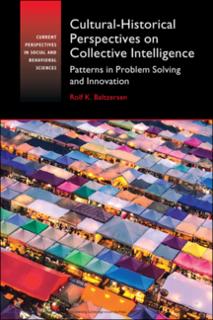| dc.contributor.author | Baltzersen, Rolf K. | |
| dc.date.accessioned | 2022-08-12T17:58:23Z | |
| dc.date.available | 2022-08-12T17:58:23Z | |
| dc.date.issued | 2022-01 | |
| dc.identifier.citation | https://www.cambridge.org/core/books/culturalhistorical-perspectives-on-collective-intelligence/367B658082C1381F97FF6DD56A60C8C1 | en_US |
| dc.identifier.isbn | 9781108833745 | |
| dc.identifier.uri | https://hdl.handle.net/11250/3011700 | |
| dc.description | This work is in copyright. It is subject to statutory exceptions
and to the provisions of relevant licensing agreements; with the exception
of the Creative Commons version the link for which is provided below,
no reproduction of any part of this work may take place without the written
permission of Cambridge University Press.
An online version of this work is published at https://doi.org/10.1017/9781108981361
under a Creative Commons Open Access license CC-BY-NC-ND 4.0 which permits re-use, distribution and reproduction in any medium for non-commercial purposes providing appropriate credit to the original work
is given. You may not distribute derivative works without permission. To view a copy of this license,
visit https://creativecommons.org/licenses/by-nc-nd/4.0
All versions of this work may contain content reproduced under license from third parties.
Permission to reproduce this third-party content must be obtained from these third-parties directly.
When citing this work, please include a reference to the DOI https://doi.org/10.1017/9781108981361 | en_US |
| dc.description.abstract | In the era of digital communication, collective problem solving is increasingly important. Large groups can now resolve issues together in completely different ways, which has transformed the arts, sciences, business, education, technology, and medicine. Collective intelligence is something we share with animals and is different from machine learning and artificial intelligence. To design and utilize human collective intelligence, we must understand how its problem-solving mechanisms work. From democracy in ancient Athens, through the invention of the printing press, to COVID-19, this book analyzes how humans developed the ability to find solutions together. This wide-ranging, thought-provoking book is a game-changer for those working strategically with collective problem solving within organizations and using a variety of innovative methods. It sheds light on how humans work effectively alongside machines to confront challenges that are more urgent than what humanity has faced before. This title is also available as Open Access on Cambridge Core. | en_US |
| dc.language.iso | eng | en_US |
| dc.publisher | Cambridge University Press | en_US |
| dc.relation.ispartofseries | Current Perspectives in Social and Behavioral Sciences; | |
| dc.rights | Attribution-NonCommercial-NoDerivatives 4.0 Internasjonal | * |
| dc.rights.uri | http://creativecommons.org/licenses/by-nc-nd/4.0/deed.no | * |
| dc.subject | Collective intelligence | en_US |
| dc.subject | Intelligence | en_US |
| dc.subject | Democracy | en_US |
| dc.subject | Innovation | en_US |
| dc.subject | Collective problem solving | en_US |
| dc.subject | History of human problem solving | en_US |
| dc.subject | Collaborative problem solving | en_US |
| dc.subject | Swarm problem solving | en_US |
| dc.subject | Stigmergic problem solving | en_US |
| dc.title | Cultural-Historical Perspectives on Collective Intelligence | en_US |
| dc.title.alternative | Patterns in Problem Solving and Innovation | en_US |
| dc.type | Book | en_US |
| dc.type | Peer reviewed | en_US |
| dc.description.version | publishedVersion | en_US |
| dc.rights.holder | Rolf K. Baltzersen | en_US |
| dc.subject.nsi | VDP::Social science: 200 | en_US |

